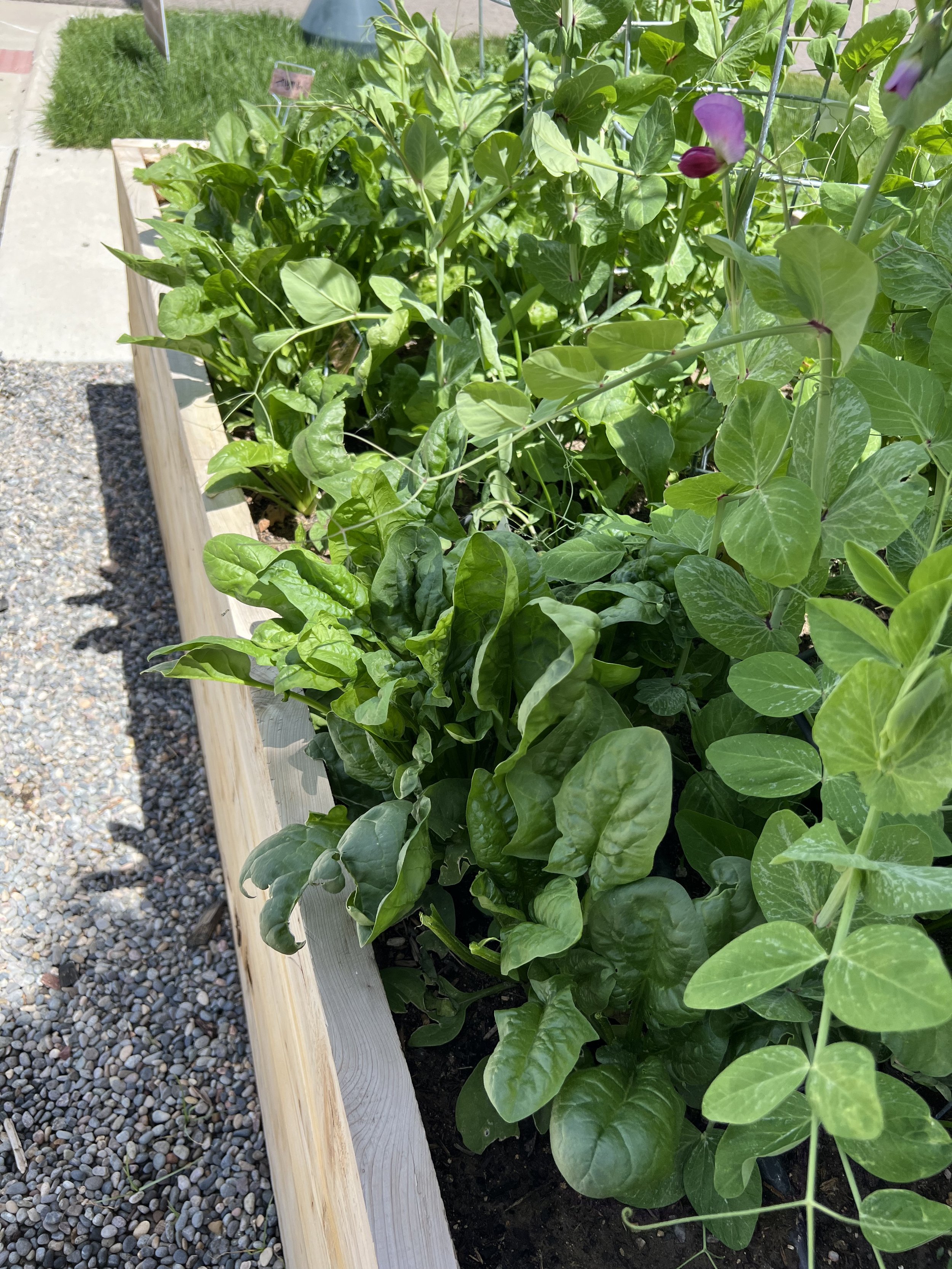How to Grow Warm Weather Spinach in Your Denver Backyard Garden
It’s starting to warm up outside so the profusion of spinach in the garden is about to come to a close… Or is it?
As temperatures rise in Denver, traditional spinach may struggle, but don't worry! There are heat-tolerant alternatives that thrive in our warm climate. Discover how to grow Malabar spinach, amaranth, and New Zealand spinach for a bountiful summer harvest.
In this blog, you’ll learn:
Malabar Spinach
Amaranth
New Zealand Spinach
Malabar Spinach
This warm weather spinach loves weather above 90°. Typically grown in the tropics, we can grow it here in Denver as well.
Planting:
Pick a spot that stays the hottest in the garden and make sure your plants get plenty of water - malabar spinach is thirsty.
And make sure you grow it on an arch or trellis! These plants vine and can get pretty big.
CHECK IT OUT: Arches and Trellises in Our Shop
Starting Seeds:
Unlike traditional spinach, it’s best to start malabar spinach indoors, usually around the beginning of April. It takes a while to germinate but scarifying (rubbing the seed with sandpaper) helps.
Just don’t be discouraged if you don’t see seedlings for a couple weeks.
Keep the soil moist and have patience. Transplant into the garden about a foot apart after the last frost.
Harvesting and Watering:
Harvest the leaves as needed using clean scissors or your fingers. Keep plants well watered to prevent them from flowering (this changes the taste of the spinach) or let them flower. The flowers and berries they produce are edible too.
Propagation:
Once you grow it, you can use the cuttings to propagate more plants! Try bringing a cutting inside in the winter to replant next summer.
Varieties We Love:
FIND YOUR SUPPLIES: Check out our Shop for Garden Supplies.
Amaranth:
While amaranth is typically grown for its seed or as a cut flower, the young leaves are edible. For raw eating, harvest the leaves when young. If you plan to steam or sautè the leaves, you can harvest them any time before the plant flowers.
Planting:
Since these plants vary in sizing, follow the spacing information listed on your seed packet. Typically, sow seeds about 1/4" deep in a sunny spot 12-15” apart after the last frost or start them indoors in mid April. To get a perpetual harvest of amaranth greens, plant more seeds every month until September.
Watering:
Amaranth is incredibly drought tolerant. While it grows well in well drained raised bed soil, the long tap root makes it a great candidate for filling out bare spots in our compacted, clay soil because it will help aerate over time. Just make sure not to let water pool up around the roots.
Harvesting:
Harvest like you would any leafy greens using clean scissors or your hands. Harvest the outer leaves first. Amaranth has a lovely nutty flavor and will be a great addition to salads, stir fry, or other dishes.
New Zealand Spinach
This warm weather spinach alternative has more succulent leaves than traditional spinach though it can be used in place of spinach in most recipes and salads.
Planting:
Plant seeds after the last frost 1/2" deep and about 1-2’ apart - these plants get big and oftentimes will trail out of the garden bed. You can train them up a trellis or use plants as a groundcover at the base of larger plants.
Watering:
It’s less drought tolerant than amaranth but does not require a lot of water (so it won’t steal water from other nearby plants).
Harvesting and Pest Control:
Watch out for late season leaf miners, aphids, and powdery mildew. Harvest young leaves, as needed, using clean scissors or your fingers. Or cut off the ends of stems to make harvesting faster. You can even cut the plant down slightly above the soil and it will come back again and again.
By incorporating these heat-tolerant spinach alternatives, you can enjoy fresh, leafy greens all summer long in your Denver garden. Happy gardening!
Have questions or want to share your gardening success stories?
Drop a comment below, or reach out through our Contact Page!
Check out our free resources or services!
Save this Blog on Pinterest!
**This post may contain affiliate links, which means I earn a small profit if you click on the link to make a purchase. Other links are not sponsored, because I also like supporting small, local businesses.**
Meet the Gardener
I’m Elisa Mack - a mom and Denverite who went from being a green-ish thumb to a kitchen garden fanatic simply by dedicating myself to the study of all things Colorado gardening.
Landscapers don’t design. And nurseries don’t make house calls.
We take a more full-service approach, from designing your dream garden to keeping it beautiful year-round.
And as your coach, I’ll help eliminate the guesswork through every season, no matter your level of knowledge.











